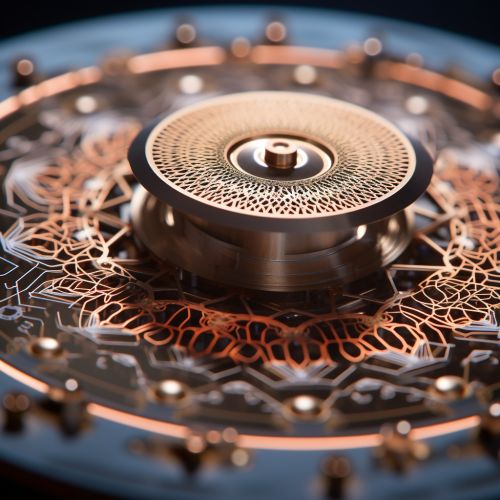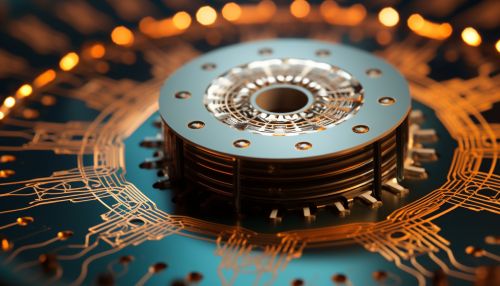Microresonator
Introduction
A microresonator is a microscale device that exploits the phenomenon of resonance to achieve specific outcomes. These devices have a wide range of applications, from telecommunications to sensing and quantum computing. They are typically constructed from materials such as silicon, glass, or polymers, and can be designed to resonate at specific frequencies, allowing them to filter, store, or manipulate light or sound waves.


Design and Fabrication
The design and fabrication of microresonators is a complex process that involves a deep understanding of materials science, physics, and engineering. The first step in the process is to choose the appropriate material for the microresonator. This is typically a material with a high refractive index, such as silicon or glass, which allows the device to trap and manipulate light effectively.
Once the material has been chosen, the microresonator is designed using computer-aided design (CAD) software. This involves defining the shape and size of the resonator, as well as the placement of any additional features, such as waveguides or electrodes. The design is then fabricated using techniques such as photolithography, etching, or laser ablation.
Operation and Applications
Microresonators operate by trapping and manipulating light or sound waves. When a wave enters the resonator, it is confined within the device and begins to oscillate at a specific frequency. This frequency, known as the resonant frequency, is determined by the size and shape of the resonator.
Microresonators have a wide range of applications. In telecommunications, they are used to filter and route signals in optical networks. In sensing, they can be used to detect small changes in environmental conditions, such as temperature or pressure. In quantum computing, they are used to generate and manipulate entangled photons.
Future Developments
As the field of microresonator research continues to advance, new applications and technologies are continually being developed. One area of particular interest is the development of microresonators for use in quantum computing. These devices could potentially revolutionize the field by providing a scalable, efficient method for generating and manipulating entangled photons.
Another area of interest is the development of microresonators for use in biological sensing. These devices could potentially be used to detect and monitor diseases at an early stage, providing a powerful tool for medical diagnostics.
